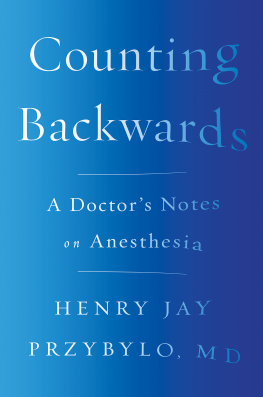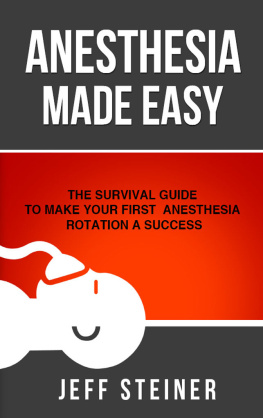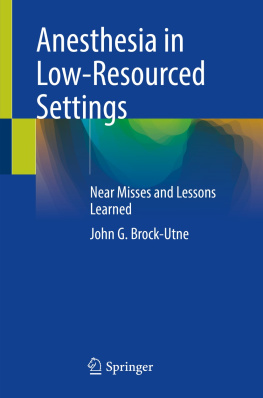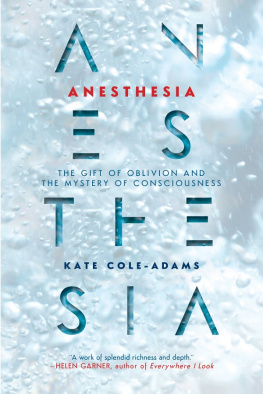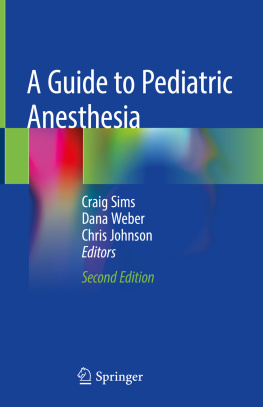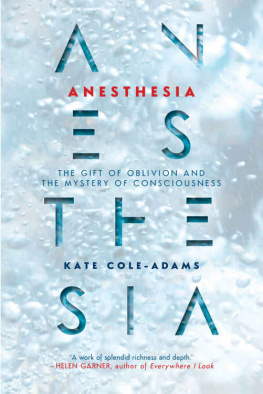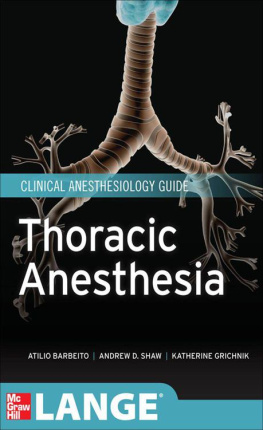
To my wife who taught me
how to love and how to live.
Who encouraged my growth and
was my every inspiration.
And who left me far too soon.
Sandy Przybylo d. October 19, 2015
A MANDA NEEDED A DEEP SLEEP. A SLEEP LIKE no other that she had experienced in her five years of life. Breathing was difficult, her nose always congested. When she did sleep, she snored and her nose frequvently ran. A clump of tissue with the consistency of jam, the adenoids, blocked the breathing path through her nose. Her surgeon needed to pass large instruments through her mouth, beyond her tongue, and past her tonsils to scrape or burnthe exact technique the surgeons choicethe redundant adenoid tissue to open the path of air through her nose. The procedure required Amanda to remain still, open her mouth, and keep it open; to let the surgeon pass surgical instruments deep into her mouth; to not cough or gag; and to not scream or cry when the knife sliced the adenoids out. To make all this possible, Amanda needed the deep sleep of anesthesia.
Amanda knelt on the gurney, her toes peeking out from under her bottom. She leaned forward, elbows on the mattress, contentedly coloring the paper in front of her, unaware of what was to come. I dont think she even noticed me when I entered her pre-anesthesia space. Her parents, standing to the side of the gurney, appeared trapped in tight quarters and couldnt disguise the fear on their faces. How would I place their daughter under the influence of my gas, and would it be safe?
In the thousands of cases in my career, my anesthetic has never failed. Its one hundred percent effective, I said. The look in their eyes changed slightly, but I didnt have their complete confidence yet.
The health care buzzword of the day is transparency. Describe every treatment option, all the benefits and possible complications, then let the patient, or in Amandas case her parents, make the decision. Ive signed consents for procedures for othersmy kids and wife. No greater stress in life exists than making decisionsdecisions with possible lifelong implicationsfor another person, even if you brought that person into this world. That stress increases as the procedure approaches, and the more I say, the less my patients and their families hear. Patients come to me for my insight and expertise. They want to know what I recommend. They want to know what I would do for myself or my family. Many dont want to make a decision, especially one they are not well versed in. Amandas parents didnt understand anesthesia or my intended process. I explained my plan as plainly as possible.
Its as simple as this. From the time I pass through those doors, I said, gesturing to the sliding glass doors of the prep room, until the time shes asleep will take less than two minutes. The mask goes on and it takes only eight to ten breaths.
Amandas parents probed for assurance and confidence.
If theres a problem, its mine. You come to me. Im the one responsible for anything that might go wrong. And I dont like problems, so there wont be any.
I mentioned that I would love to etch a guarantee in granite, but I cant. I added: In all the thousands of my cases, a healthy patient goes in, a healthy patient comes out.
A look of amazement swept over their faces.
At the end of the surgery, I turn my gas off, Amanda breathes fresh air, and the anesthesia wears off. Technically, shes awake when she leaves the room, but recognition takes a few minutes. Shell be in recovery when she understands where she is. As soon as that happens, youll rejoin her.
In all, from the time I first meet patients, families, and loved ones until the trip to the anesthetizing area begins takes about three minutes. In that time, I need to earn their trust and have them place their faith in my care.
Soon, Amanda would be in the procedure room breathing a combination of gases on her way to entering the state of anesthesia.
A MAGIC PILL THAT RELAXES, soothes, comforts, prevents all pain, staves off bad dreams and thoughts, and provides a cooperative patient during medical procedures. Such a magic pill is the pharmaceutical industrys ultimate fantasy. In reality, its already been found, and its not a pill and its not natural. Its a gas thats synthesized.
A volatile is a fluid that in air at room temperature would rather exist as a gas. Volatiles are part of everyday life. They are components of cleaning fluids, bleach, paint, nail polish remover, and, most important for me, my anesthesia gases. The term volatile anesthesia means breathing a gas to induce the anesthetic state. Ether is one such volatile that loves to become a gas. Its magical benefit to health carepainless surgerywas first shown in the 1840s, but its history goes much farther back in time.
The Muslim cleric and alchemist Jabir Ibn Hayyan, who lived in Persia in the eighth century, likely came close to synthesizing ether. He is known to have used the components needed to synthesize it, including sulfur, which is necessary to create the reaction with alcohol. But it remains speculation that Jabir actually managed to produce ether. (Jabir was a remarkable man regardless of his role in synthesizing ether. As a noted philosopher, geographer, and linguist, he is said to have written some three thousand books. The Latin form of Jabir is Geber, and his prolific and wide-ranging writing is considered by experts in etymology to have inspired the word gibberish.)
In 1540, Valerius Cordus, a German physician, botanist, and alchemist whose life was only a flashhe was twenty-nine when he diedcombined fortified wine and sulfuric acid to form what he called oleum dulce vitrioli, the delicious Renaissance Latin term translated as sweet oil of vitriol. Its medicinal properties were noted and came to be of even greater interest when Corduss contemporary Paracelsus, the Swiss-German polymath, found that ether caused chickens to sleep. Paracelsus is believed to have tested ether to treat seizures, the result unclear. He might have gone on to discover the painless state created by the sweet oil of vitriol, allowing for surgical invasions of the body, but he, too, died prematurely and mysteriously.
Another two centuries passed before the German-born chemist August Sigmund Frobenius published an article in 1729 describing the method of synthesizing oleum dolce vitrioli and calling it ether, from the Greek base word meaning to alight or to blaze (ether is very flammable). Ether also connotes the upper air, which is fitting because it is a volatile that readily changes from liquid to gas.
Near this time, pneumatic medicineinhaling gases as a means of therapyflourished, leading to the discovery of the euphoria one can attain by inhaling the fumes of ether. Medical students, then as today, searched for new means to distract themselves from the pyretic intensity of their work and found that ether frolics provided that relief.
Medical cures of the time werent founded in science and included treating asthma with dried, ground toad; holding a live puppy to the stomach to deal with bowel obstructions; applying leeches to bleed bad humors; and using dog feces as a remedy for sore throat. But as alchemythe belief of transforming one compound into another, such as lead into goldevolved into chemistry, the individual gases composing air (oxygen, nitrogen, and carbon dioxide) were isolated. Joseph Priestley, a chemist and noted grammarianhe wrote The Rudiments of English Grammarproduced nitrous oxide for the first time in 1772. By 1800, the chemist Humphry Davy had noted that this colorless and odorless gas caused a state of euphoria and might even be used to prevent pain during surgery. He didnt pursue that purpose. By the turn of the century, nitrous oxide demonstrations for comic relief had become a business.
Next page
